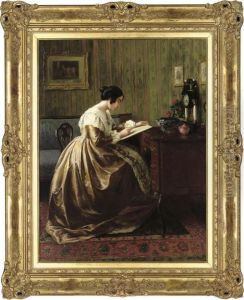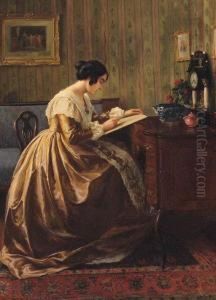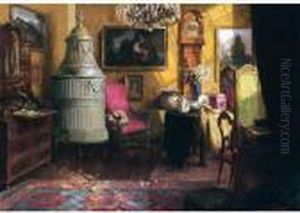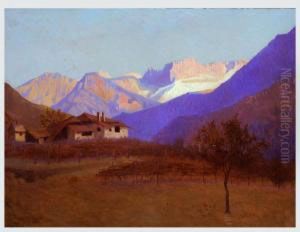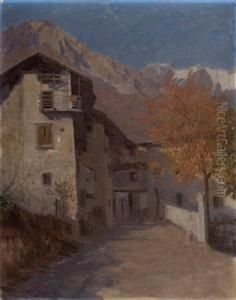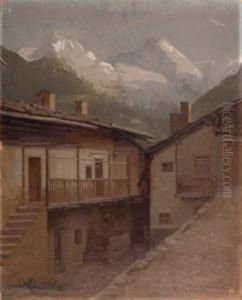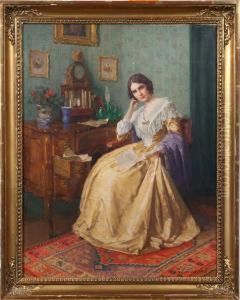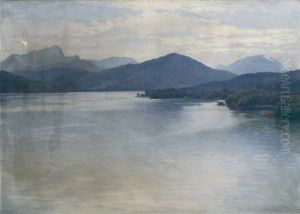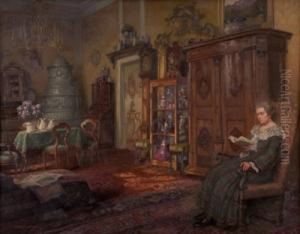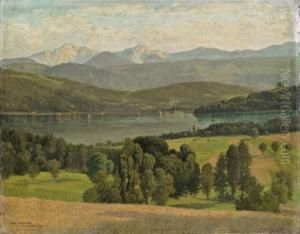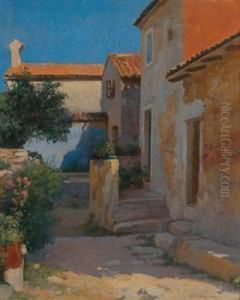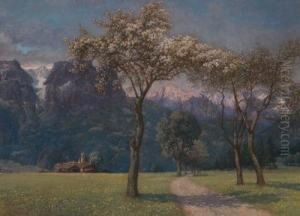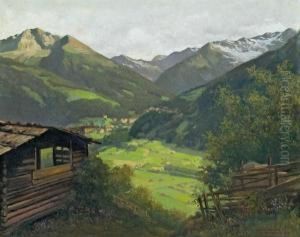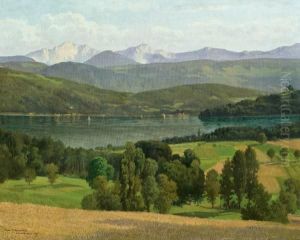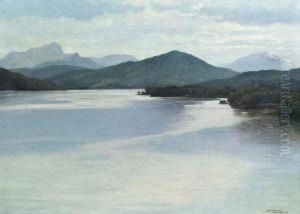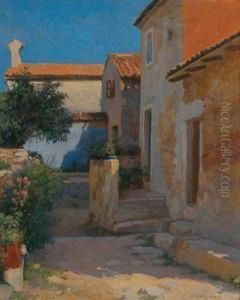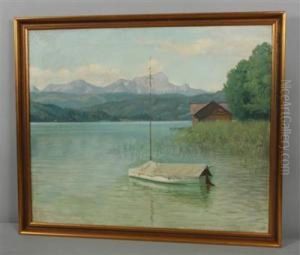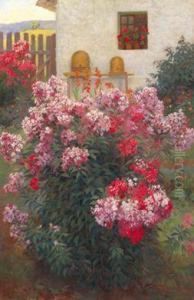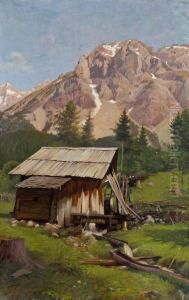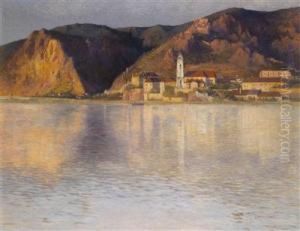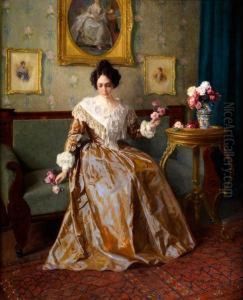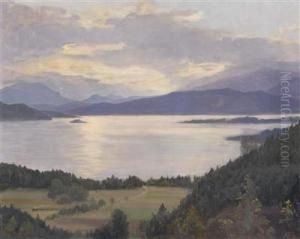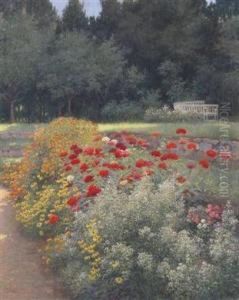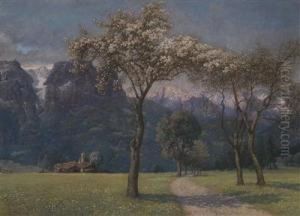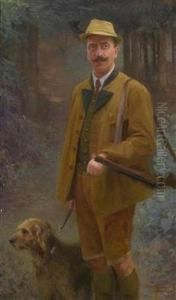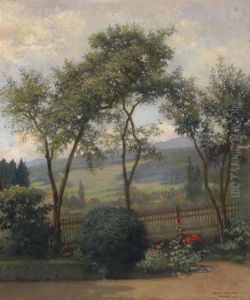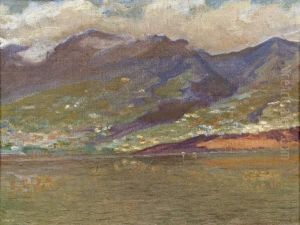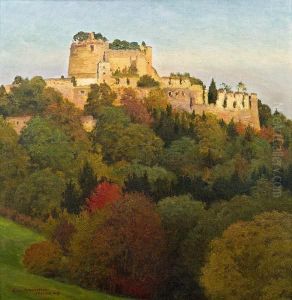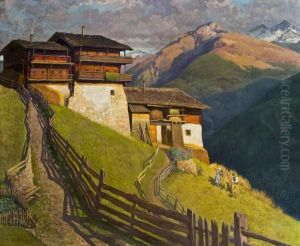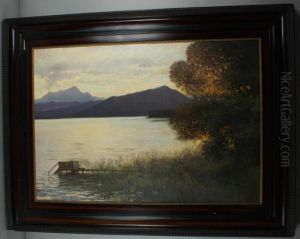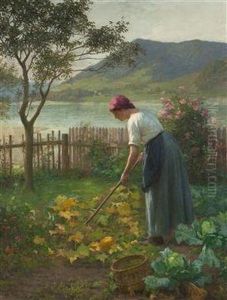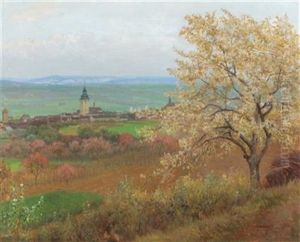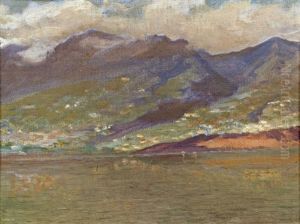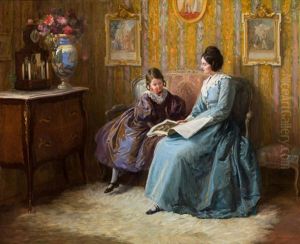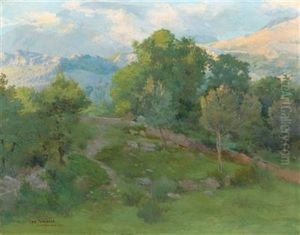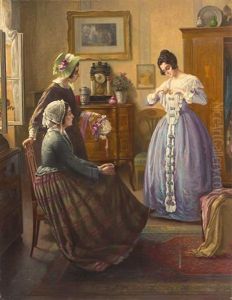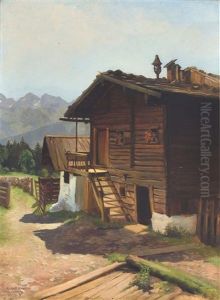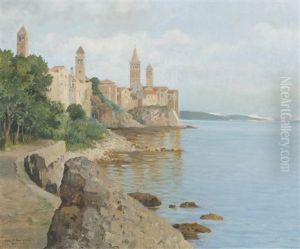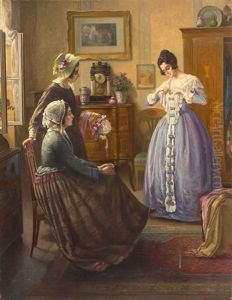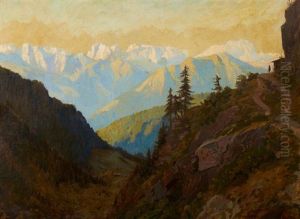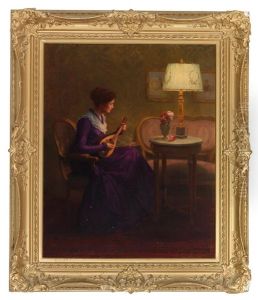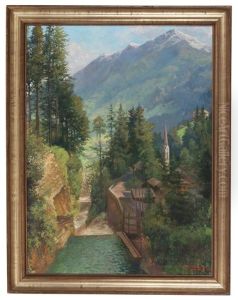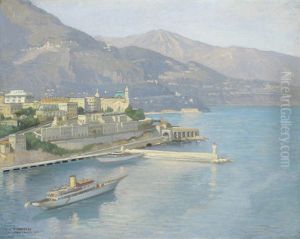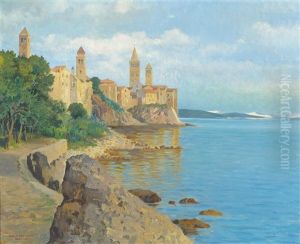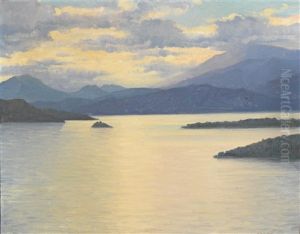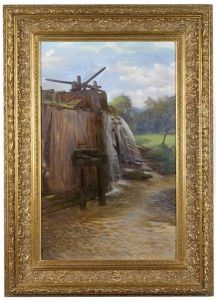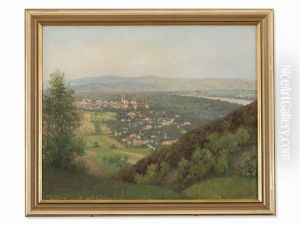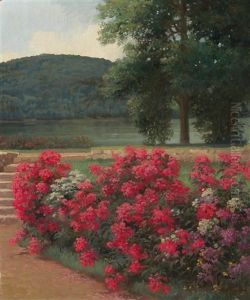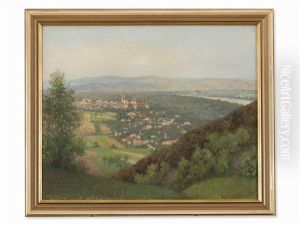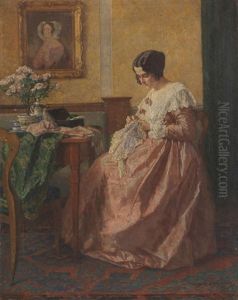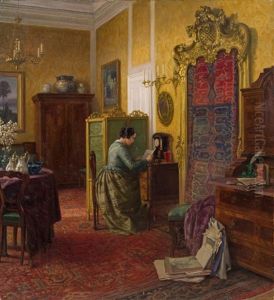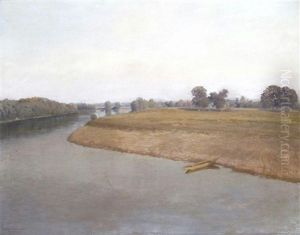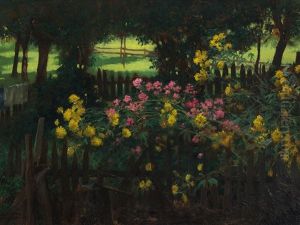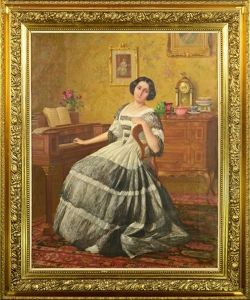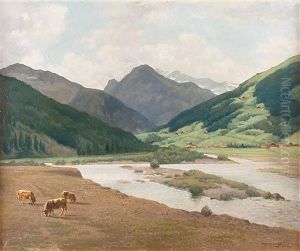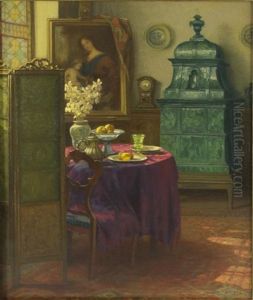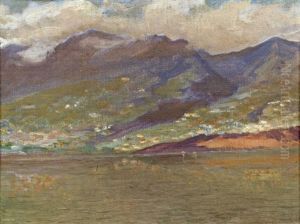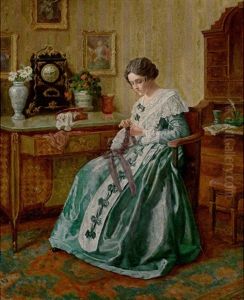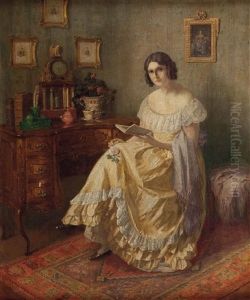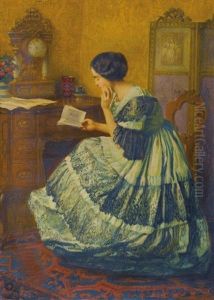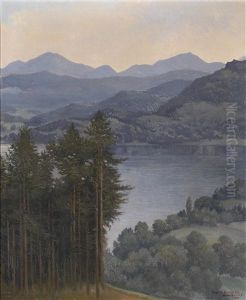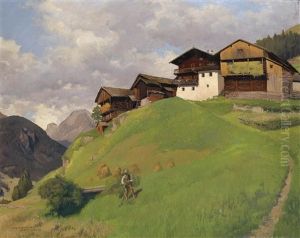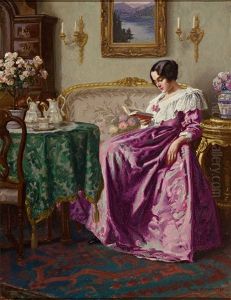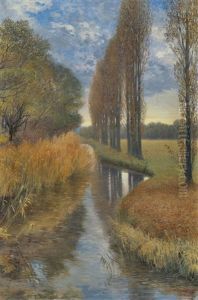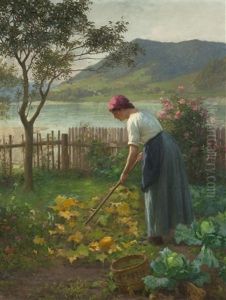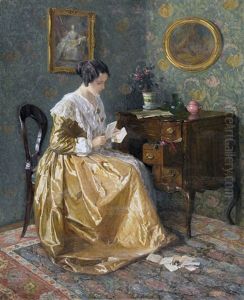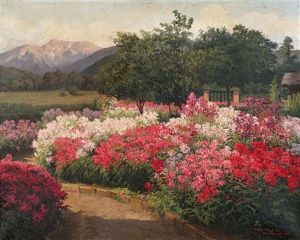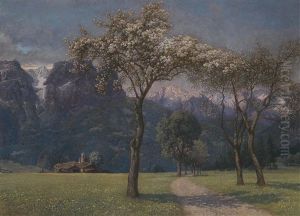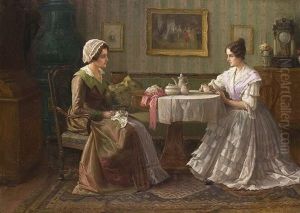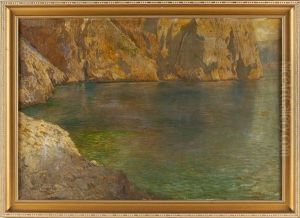Karl Maria Schuster Paintings
Karl Maria Schuster was an Austrian painter and graphic artist who is known for his contributions to the Jugendstil movement, the German version of Art Nouveau. Born on February 21, 1871, in Vienna, Austria, Schuster developed an artistic style that blended elements of symbolism and Art Nouveau. His works often featured mythological and allegorical subjects, rendered with a strong sense of line and color that characterized the Jugendstil aesthetic.
Schuster studied at the Academy of Fine Arts Vienna under Christian Griepenkerl and later under William Unger. He was influenced by the Vienna Secession, a group of artists that sought to break away from the traditional academic art of the time. This group, spearheaded by Gustav Klimt, promoted a new, modern style that integrated various elements from European art movements.
Throughout his career, Schuster created a range of works including illustrations, book designs, and posters. His illustrations often appeared in Ver Sacrum, the official magazine of the Vienna Secession. These works helped to disseminate the new art style throughout Europe and contributed to the international recognition of the Jugendstil movement.
In addition to his graphic work, Schuster painted landscapes and portraits. His landscapes, in particular, showed a sensitivity to the natural beauty of the Austrian countryside and a subtlety in the use of light and shadow. These paintings were less influenced by Jugendstil and more by the impressionist movement, reflecting the transition in European art from the decorative to the more expressive styles of the early 20th century.
Despite his involvement with the avant-garde movements of his time, Schuster's work remained somewhat conservative, and he never fully embraced the more radical aspects of modernism. He continued to work in Vienna throughout his life, maintaining a traditional approach to composition and technique even as the artistic world around him underwent dramatic changes.
Karl Maria Schuster passed away on March 28, 1953, in Vienna. While he may not be as well-known as some of his contemporaries, his work provides a valuable insight into the transitional period of European art at the turn of the 20th century, bridging the gap between the late 19th-century academic traditions and the emerging modernist styles.
